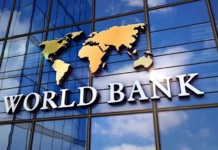Each year, millions of migrants leave their homes and families behind to make a living overseas. And every year, these migrants send billions of dollars, spending further millions on remittance fees in the process, home to their loved ones, who often depend on this money for their survival, health, education and livelihood.
According to figures released by World Bank, in the year to November 2012 alone, 30 million African migrants sent close to US$60 billion (£38 billion) in remittances; and paid more for the privilege than any other migrant group. Sub-Saharan Africa is the most expensive region to send money to, with average remittance costs based on the cost to send US$200 reaching 12.4 per cent in 2012. The average cost of sending money to Africa, again based on the cost to send $200, is almost 12 per cent higher than the global average and almost double the cost of sending money to South Asia.
The World Bank is aiming to bring down the cost of sending remittances worldwide to an average 5 per cent by 2014, thereby putting billions of dollars back into the pockets of poor families, rather than into the coffers of already rich banks. Bringing remittance prices down to 5 per cent from the current 12.4 percent average cost would put US$4 billion more in the pockets of Africa’s migrants and their families
“Remittances play a critical role in helping households address immediate needs and also invest in the future, so bringing down remittance prices will have a significant impact on poverty,” director of the World Bank’s Africa Region and Financial Inclusion and Infrastructure Global Practice, Gaiv Tata, said.
Remittance prices are even higher between African nations. South Africa, Tanzania, and Ghana are the most expensive countries in Africa from which to send money elsewhere within the continent, with prices averaging 20.7 per cent, 19.7 per cent, and 19.0 per cent respectively. There are several factors driving this premium, including limited competition in the market for cross-border payments. According to Massimo Cirasino, Manager of the World Bank’s Financial Infrastructure and Remittances Service Line, competition and transparency are key. “Governments should implement policies to open the remittances market up to competition,” he explains, adding: “Increased competition, as well as better informed consumers, can help bring down remittance prices.”
The World Bank manages a database, Send Money Africa, which exists to increase transparency in the market and provide migrants with complete and reliable information on all the components of the transaction. Currently, Send Money Africa finds that banks, which are the most expensive remittance service providers, are often the only channel available to African migrants. A regulatory environment that encourages competition among remittance service providers not only gives migrants more choices, it can also help bring down prices. Migrants can also benefit from more transparent information on remittance services because it gives them the resources they need to make informed decisions.
The Bank’s November 2012 study says remittances to sub-Saharan Africa will grow by zero per cent in 2012, when remittances grew by 6.8 per cent. The upward trend has been reported since 2009. The region will receive US$31 billion (£20 billion) in remittances with Nigeria receiving the largest amount of money in absolute terms while Liberia and Lesotho lead in remittances as a share of their GDP.
The Bank’s data indicates that the slow-down is not unique to sub-Saharan Africa. Growth in remittances to developing nations will slow down to 6.5 per cent against 11.7 percent last year.
Key findings in the Send Money Africa report are:
• The average total cost of sending money to Africa in Q4 2012 was 11.89 per cent; the second highest since the SMA database was launched in Q3 2011.
• The cost of sending money to Africa in Q4 2012 was nearly three percentage points more expensive than the global average cost for the same period, which measured at 8.96 per cent, according to Remittance Prices Worldwide (see http://remittanceprices.worldbank.org).
• The 10 most expensive corridors were all intra-Africa; with the top five all originating in South Africa.
• The most expensive sending markets of those surveyed are Tanzania, South Africa, and Ghana. The cheapest sending markets are those in the Gulf – UAE, followed by Saudi Arabia, and Spain.
• The most expensive countries to send money to are those receiving mainly from other African countries – namely Malawi, Botswana, and Mozambique. The cheapest market to send money to is Egypt – surveyed only in the Gulf countries in the sample. Egypt is followed by Liberia and Somalia.
• Commercial banks continue to be the most expensive Remittance Service Provider (RSP) type.
• Bank account services are the most expensive method of remittance transfer.











